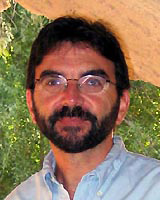full article:
Dear EditorSince the late 1980s the shortage of rural doctors across Australia has been well documented1-3. In response, the government and the community at large have invested considerable time, effort and resources in encouraging and supporting doctors to take up rural medicine as a career option. And to a considerable extent this has been a remarkable success story. Governments at both State and Federal levels have responded to the call with a multitude of complementary programs, ranging from the establishment of rural clinical schools across the nation through to programs assisting with procedural skill maintenance.
But what happens to rural doctors mid-career if they are confronted with family requirements that can no longer be met in their rural town, such as educational issues for their children and opportunities for spouse/partner. These issues have been identified as a highly important for rural doctors4-6 and allied health professionals7,8.
Although there is certainly an overlap between the rural and urban medical experience and required skill set, the transition from rural to urban practice often results in a change of focus and priorities within the patient consultation environment. This could be dramatic with the cessation of procedural and hospital based activities or more subtle with a change in emphasis towards specialist care, all issues identified as highly important for rural doctors9. While some may relish the opportunities presented by this change, others may well decry the potential loss of opportunities to practice hard won skills and the professional challenges associated with these.
The dedicated rural doctor is, then, at the crossroad. The path to urban practice leaves few opportunities to maintain these special skills, which are soon lost to disuse. Alternatively, remaining in the rural location creates additional family hardships. Currently the system does not seem to promote a clear path to a middle ground, a compromise solution addressing both family and professional needs.
What of viable solutions?
I would like to propose a change of current thinking towards considering the job- sharing model. Those communities that are unable to attract a full time resident doctor may accept two experienced rural doctors living in their community for alternative fortnights and sharing the position. This provides the community with a continuous medical presence, albeit shared between two people. While not in the community, the 'job sharing' doctor is with their family in a location suitable to the family's requirements. Although not ideal, it does present an option for balancing professional and personal needs.
Although not a solution for everyone or every community, this option may be an attractive solution for some. The community receives health care from experienced and skilled rural doctors, at least one of whom is continuously present. Unlike locum arrangements, the nexus of each doctor having a relationship with a particular community enhances continuity of care. The potential for long-term placement are enhanced as the guaranteed time away minimises professional burnout and facilitates access to continuing education programs and face-to-face peer support.
Although there have been private arrangements of a similar nature, there has been no systematic exploration of this possibility. As with other rural workforce initiatives, the key to overcoming the logistical barriers would require acceptance of this alternative approach in thinking. There would be new costs to consider, especially modes of remuneration and travel subsidies.
The economic cost-benefit of retaining two experienced rural doctors albeit at reduced strength compared to sourcing and training a new incumbent would appear to be quite favourable. The human cost saving appears almost self-evident: allowing experienced rural doctors to continue contributing to the health of rural Australia once they are unable for family reasons to continuously reside there.
I would like to open the debate on job sharing as a conceptual approach for retaining rural doctors who might otherwise be lost to the system.
Stephen Margolis
Associate Professor
Queensland, Australia
References
1. Australian Institute of Health and Welfare. Australian Institute of Health and Welfare medical labour force 1994. Canberra: AIHW, 1996.
2. Harding J. General practice medical workforce in Australia: what the data say. Proceedings, AMA Annual Conference, 1999.
3. Kamien M. Report of the Ministerial Inquiry into the Recruitment and Retention of Country Doctors in Western Australia. Perth: University of Western Australia, Department of Community Practice, 1987.
4. Strasser RP, Hays RB, Kamien M, Carson D. Is Australian rural practice changing? Findings from the National Rural General Practice Study. Australian Journal of Rural Health 2000; 8: 222-226.
5. MacIsaac P, Snowdon T, Thompson R, Crossland L, Veitch C. General practitioners leaving rural practice in Western Victoria. Australian Journal of Rural Health 2000; 8: 68-72.
6. Hays R, Wynd S, Veitch C, Crossland L. Getting the balance right? GPs who chose to stay in rural practice. Australian Journal of Rural Health 2003; 11: 193-198.
7. Denham LA, Shaddock AJ. Recruitment and retention of rural allied health professionals in developmental disability services in New South Wales. Australian Journal of Rural Health 2004; 12: 28-29.
8. Mills A, Millsteed J. Retention: An unresolved workforce issue affecting rural occupational therapy services. Australian Occupational Therapy Journal 2002; 49: 170-181.
9. Strasser RP, Hays RB, Kamien M, Carson D. Is Australian rural practice changing? Findings from the National Rural General Practice Study. Australian Journal of Rural Health 2000; 8: 222-226.
